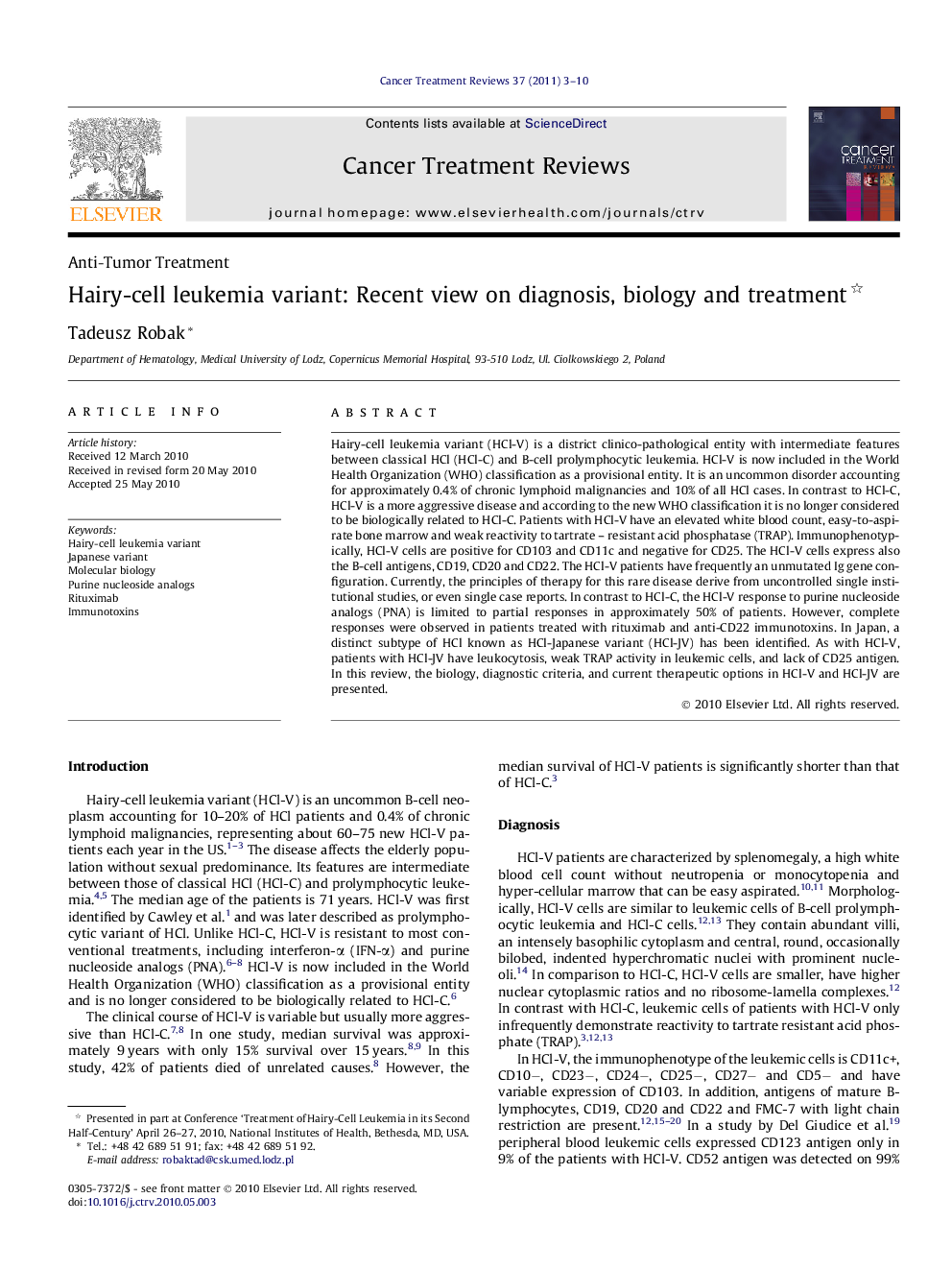| Article ID | Journal | Published Year | Pages | File Type |
|---|---|---|---|---|
| 3980139 | Cancer Treatment Reviews | 2011 | 8 Pages |
Hairy-cell leukemia variant (HCl-V) is a district clinico-pathological entity with intermediate features between classical HCl (HCl-C) and B-cell prolymphocytic leukemia. HCl-V is now included in the World Health Organization (WHO) classification as a provisional entity. It is an uncommon disorder accounting for approximately 0.4% of chronic lymphoid malignancies and 10% of all HCl cases. In contrast to HCl-C, HCl-V is a more aggressive disease and according to the new WHO classification it is no longer considered to be biologically related to HCl-C. Patients with HCl-V have an elevated white blood count, easy-to-aspirate bone marrow and weak reactivity to tartrate – resistant acid phosphatase (TRAP). Immunophenotypically, HCl-V cells are positive for CD103 and CD11c and negative for CD25. The HCl-V cells express also the B-cell antigens, CD19, CD20 and CD22. The HCl-V patients have frequently an unmutated Ig gene configuration. Currently, the principles of therapy for this rare disease derive from uncontrolled single institutional studies, or even single case reports. In contrast to HCl-C, the HCl-V response to purine nucleoside analogs (PNA) is limited to partial responses in approximately 50% of patients. However, complete responses were observed in patients treated with rituximab and anti-CD22 immunotoxins. In Japan, a distinct subtype of HCl known as HCl-Japanese variant (HCl-JV) has been identified. As with HCl-V, patients with HCl-JV have leukocytosis, weak TRAP activity in leukemic cells, and lack of CD25 antigen. In this review, the biology, diagnostic criteria, and current therapeutic options in HCl-V and HCl-JV are presented.
